Bonsai | Penjing: The Collections of the Montréal Botanical Garden by Danielle Ouellet. $71.95 in hardcover from Goose Lane Editions. 276 pages.
I was excited to find a note from Goose Lane Editions a few weeks ago announcing the publication of Bonsai | Penjing: The Collections of the Montréal Botanical Garden, by Danielle Ouellet. A few days later, I received a review copy in the mail.
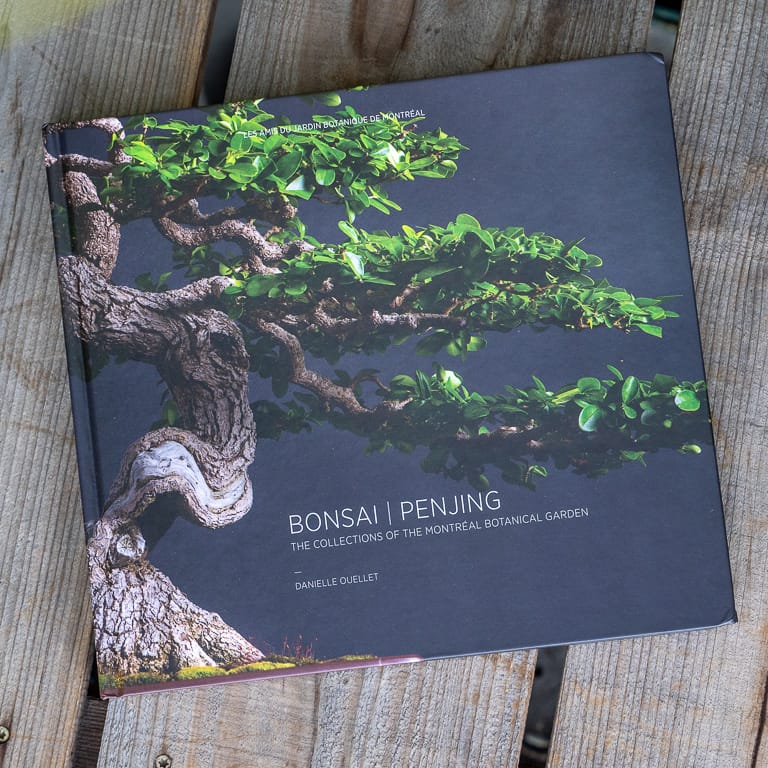
Bonsai | Penjing
The book is a remarkable production made possible by the Friends of the Montréal Botanical Garden. Here’s what makes it great:
- It’s a well-written and beautifully produced book.
- It’s a great example of how to showcase a public bonsai and penjing collection.
- It provides a great starting point for learning about penjing.
Like many bonsai enthusiasts, I don’t know a lot about of penjing styles or history. Ouellet’s text provides a helpful introduction.
After outlining characteristics that apply to all penjing, such as inspiration from nature and the presence of a cultural dimension, Ouellet offers a primer on prominent contemporary approaches.
Ouellet’s research for the book included interviews in China, Hong Kong, Japan, and Canada with the people who helped establish the bonsai and penjing collections. The stories are fun to read – particularly the account of the last-minute maneuverings that secured delivery of thirty penjing from the Wu Yee Sun collection in Hong Kong.
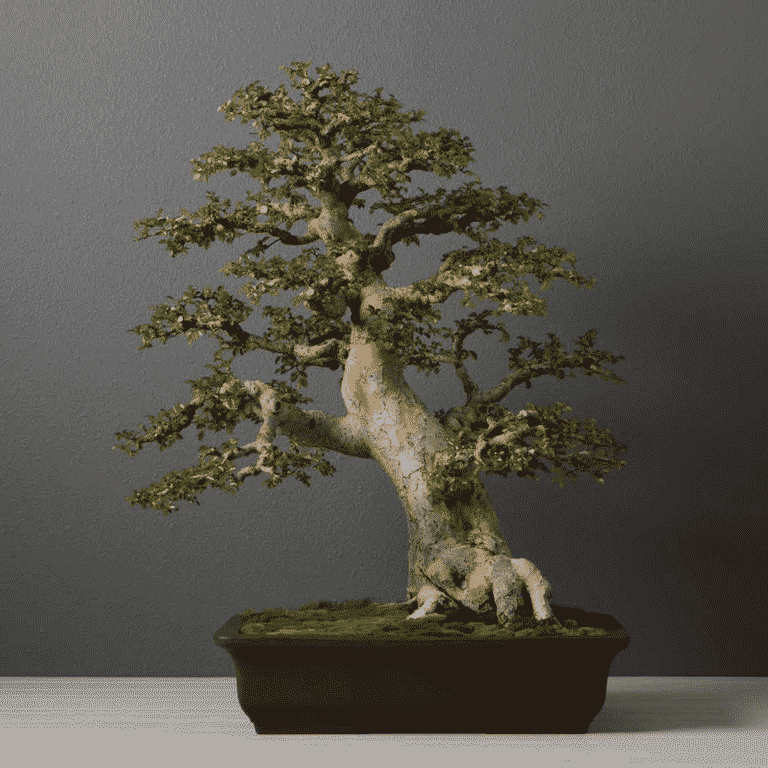
Chinese elm (page 139) – “The first criterion is that a penjing must have a cultural dimension; otherwise it is like a person with no soul.” – Hu Yunhua
The format of the book – 11.75″ by 10.75″ hardcover – makes it easy to appreciate the glossy color photos inside. After 75 pages focusing on history and esthetics, the remainder of the book features 106 trees from the Garden’s bonsai and penjing collections.
Studying these trees makes it clear that Éric Auger (Curator of the Japanese, North American and tropical collections) and Matthiew Quinn (Curator of the Chinese collections ) are doing a fantastic job.
More than anything, their work strikes me as thoughtful. The trees are healthy and well-styled, down to the last branch. It can take a lot of time to prepare a single tree for display, and the care Éric and Matthiew take shows in every photo.
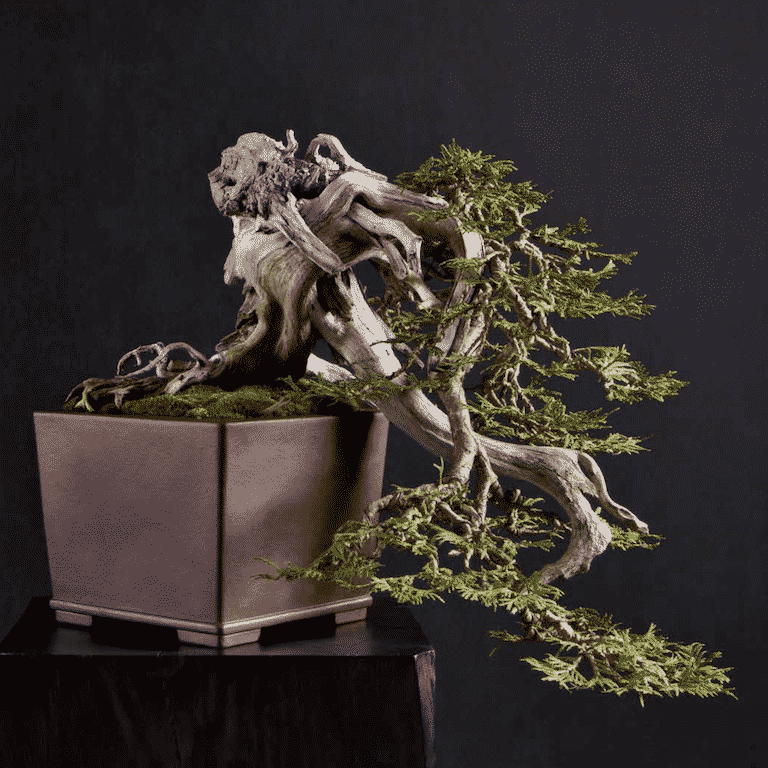
Eastern White Cedar (page 216) – “North American artists can dare to break free of established standards and experiment.” – David Easterbrook
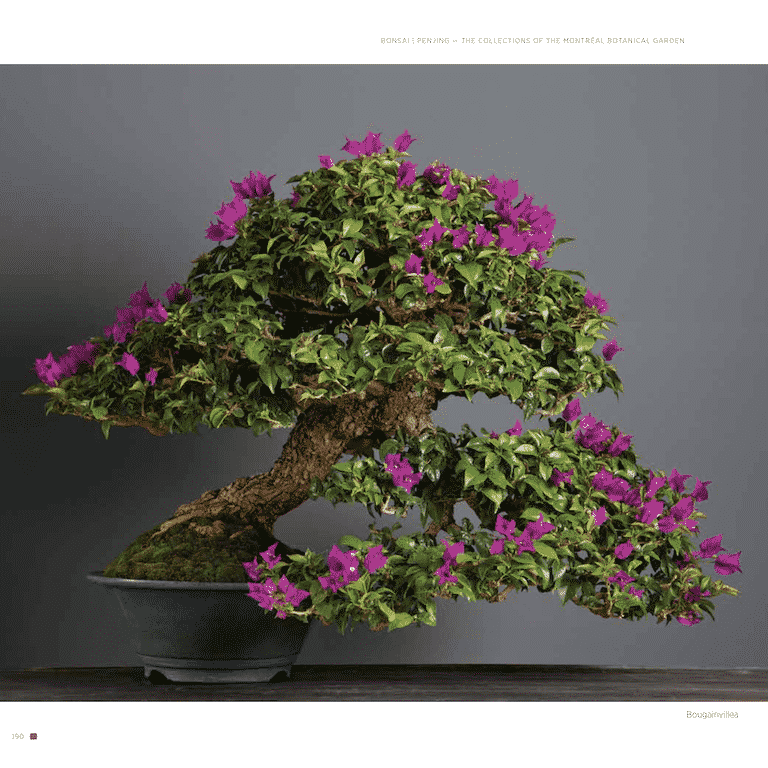
Bougainvillea (page 190) – “Contemplating and caring for your bonsai is a way to restore your inner peace after a long work day” – Tomio Yamada
Following the gallery are brief descriptions of each tree with botanical information, geographic distribution, dimensions, and prose descriptions featuring anecdotes and explanations of trees’ key features.
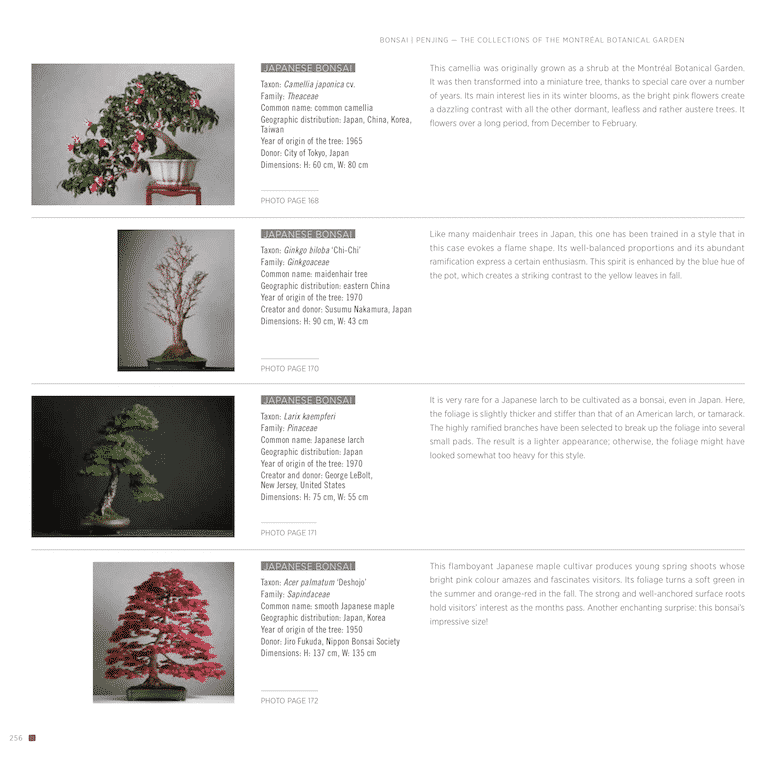
Descriptions of the specimens
It’s this last section that reinforces the role of the Montréal Botanical Garden as custodian of these trees and their stories, and makes the book an example for other public bonsai and penjing gardens to follow.
What’s missing? It would be nice to see a few photos of the Botanical Garden itself. After learning how the collections came to Montréal, it would be fun to see the trees as visitors to the garden experience them. Will let you know what I find when I get a chance to visit!
Bonsai | Penjing: The Collections of the Montréal Botanical Garden by Danielle Ouellet is available today from booksellers including Goose Lane Editions, Amazon, and Barnes and Noble.
Learn more about the Montréal Botanical Garden.
The post New book showcases bonsai and penjing at the Montréal Botanical Garden appeared first on Bonsai Tonight.
